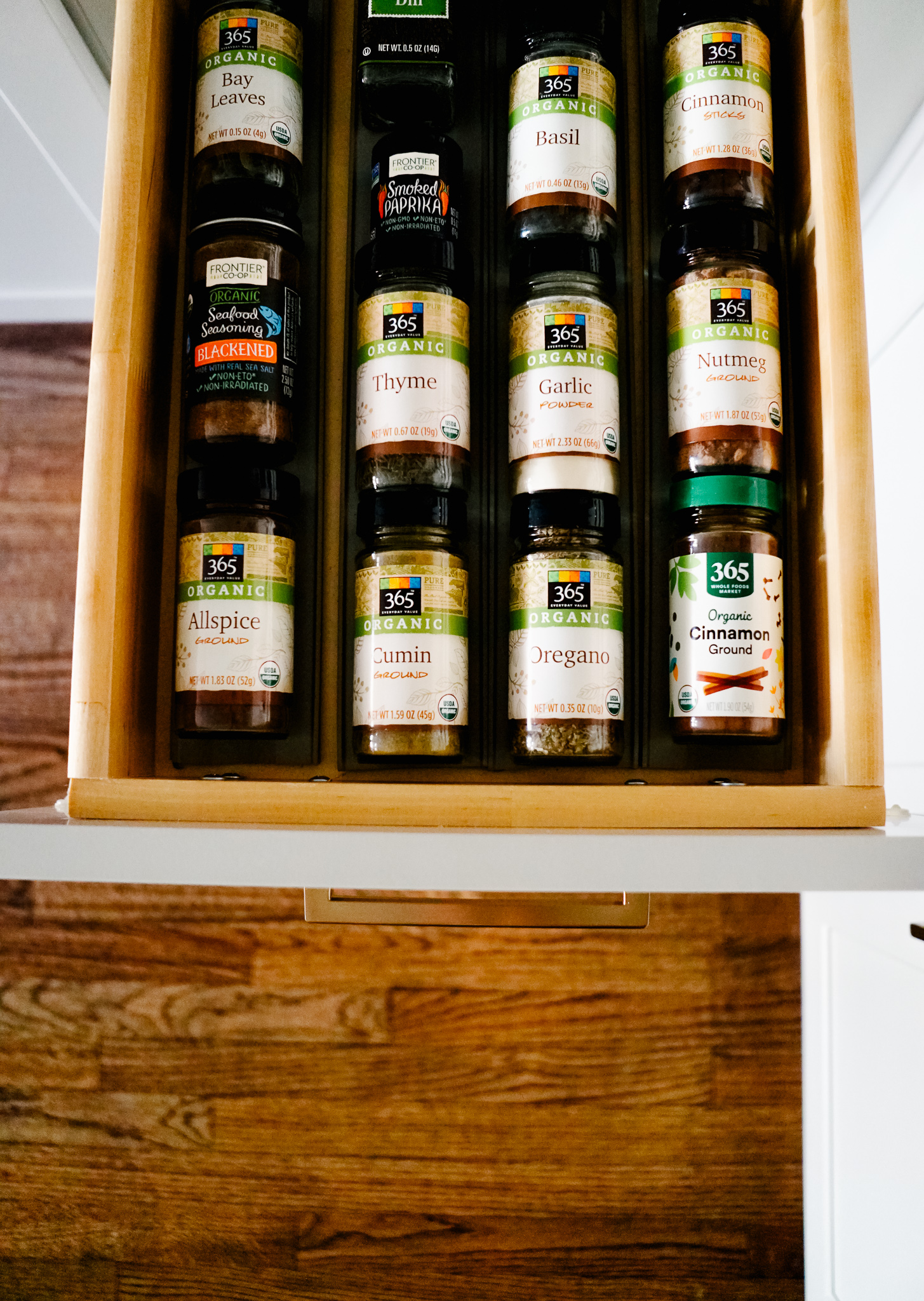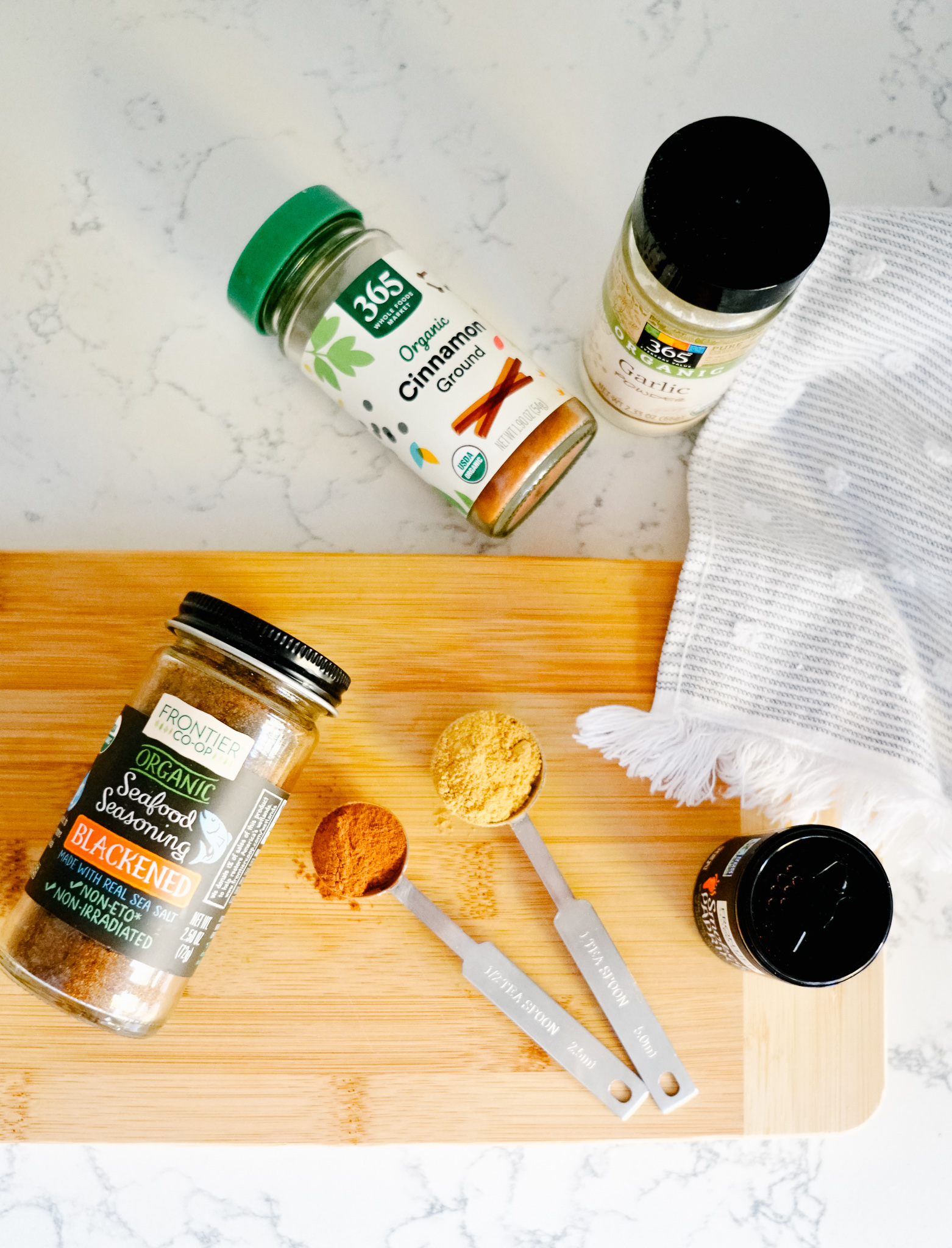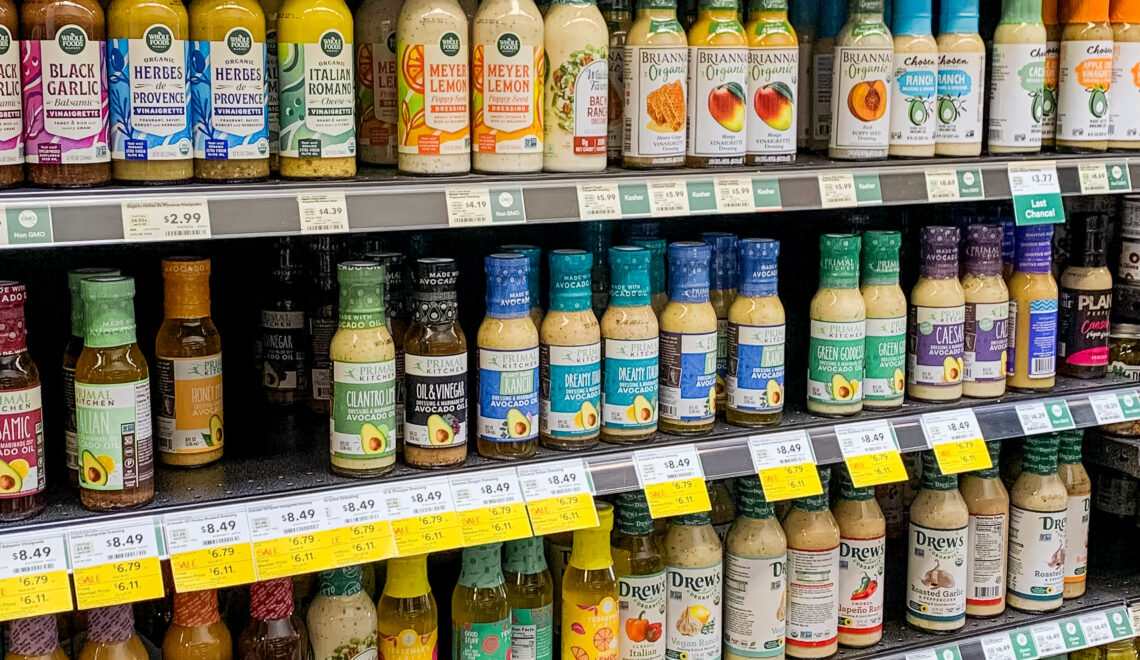
Welcome back to the Pantry Detox series! Today we’re covering a big category and looking at whether it’s worth it to buy organic spices. It’s no secret that Americans love spices. According to the American Spice Trade Association, we eat and import more spices than anywhere else in the world. That adds up to a lot of spices on our plates each year!
I personally love experimenting with new flavors with spices, but even if you’re not an avid cook, I’m sure you still use at least 1 or 2. This may not be top of your list to buy organic, but let’s take a deeper look. How do organic spices stack up to conventional and is it worth it to buy organic spices?
⠀
[highlight2]You can check out the last Pantry Detox edition on cooking oils here.[/highlight2]
⠀
The truth is that conventional spices can hide a host of substances. From how they’re grown to the finishing additives, you may be sprinkling a lot more than just flavor on your food. Let’s take a closer look!
Why Buy Organic Spices?
Farming
Non-organic crops are grown with insecticides, fungicides, and herbicides. These all remain through the harvesting and processing of the spices. Also, while not all conventional spices are genetically modified, some are GMO crops.
Additionally, soil conditions can add things like heavy metals while the crops are grown. In fact, several brands of turmeric and other spice blends were recently recalled due to lead contamination. They suspect the soil may have caused it.
Sterilization
Because of bacteria, mold, insects, and other contaminants, the USDA requires the sterilization of spices. Here are some typical ways that it’s done:
Irradiation– Shown to reduce vitamins and phytonutrients in food. The process also creates the radiolytic derivative, 2-alkylcyclobutanones (2-ACBs). This is assumed safe in non-fatty foods but several have raised questions about it.
Fumigation– Ethylene oxide, a known carcinogen, is most commonly used. As a gas, not much remains afterward, but it can convert to ethylene chlorohydrin (ECH) and ethylene glycol (EG), which are both harmful to health, and remain on the spices. Many other countries have banned this for safety concerns.
Steaming– The safest option and the chosen way for most certified organic spices.
Additives
How they spice up your spices may surprise you! Here are some common hidden additives in conventional spices:
-
Artificial preservatives
-
Fake dyes
-
Anti-caking agents (which can also contain GMO ingredients)
-
Synthetic flavor enhancers, including things like MSG and other excitotoxins.
Food Fraud
Food Fraud is more common than you think, especially when it comes to imported foods. Since the US imports the majority of our spices and due to the high cost of some of them, this area is ripe with fraud. Often the product is bulked up with other substances to make it stretch further.
⠀
Organic Spices
There is good news though! Buying certified organic spices can mitigate much of this.
⠀
From soil quality and growing conditions to final additives (or lack thereof), you can be more confident in what you’re actually buying when you buy organic. Most grocery stores carry organic spices these days and you can also order them online. I like Mountain Rose Herbs and have even had some luck buying brands I trust on Amazon.
⠀
You can also grow your own! While you may not want to grow 10 different herbs, picking 1 or 2 you use frequently and growing them in a small container can be both convenient and cheap. I grow basil every year and it’s so easy to dehydrate or freeze the extra at the end of the season. It’s also nice to have the fresh herbs on hand sometimes.
Check out the last Pantry Detox post here and stay tuned for more tips for keeping your pantry stocked with the good stuff!
⠀
*Some affiliate links used. All thoughts and opinions are always my own.
Leave a comment











